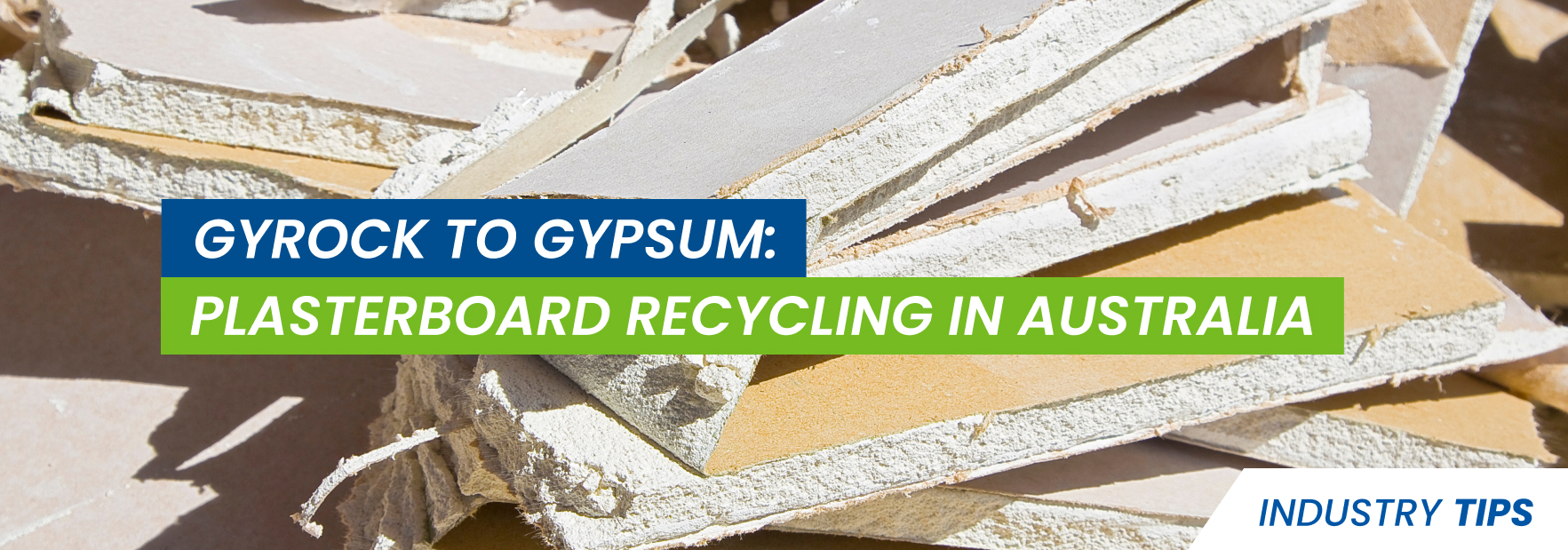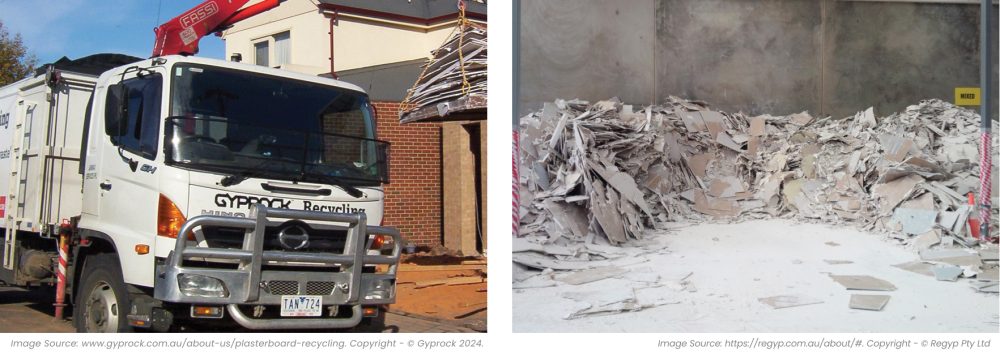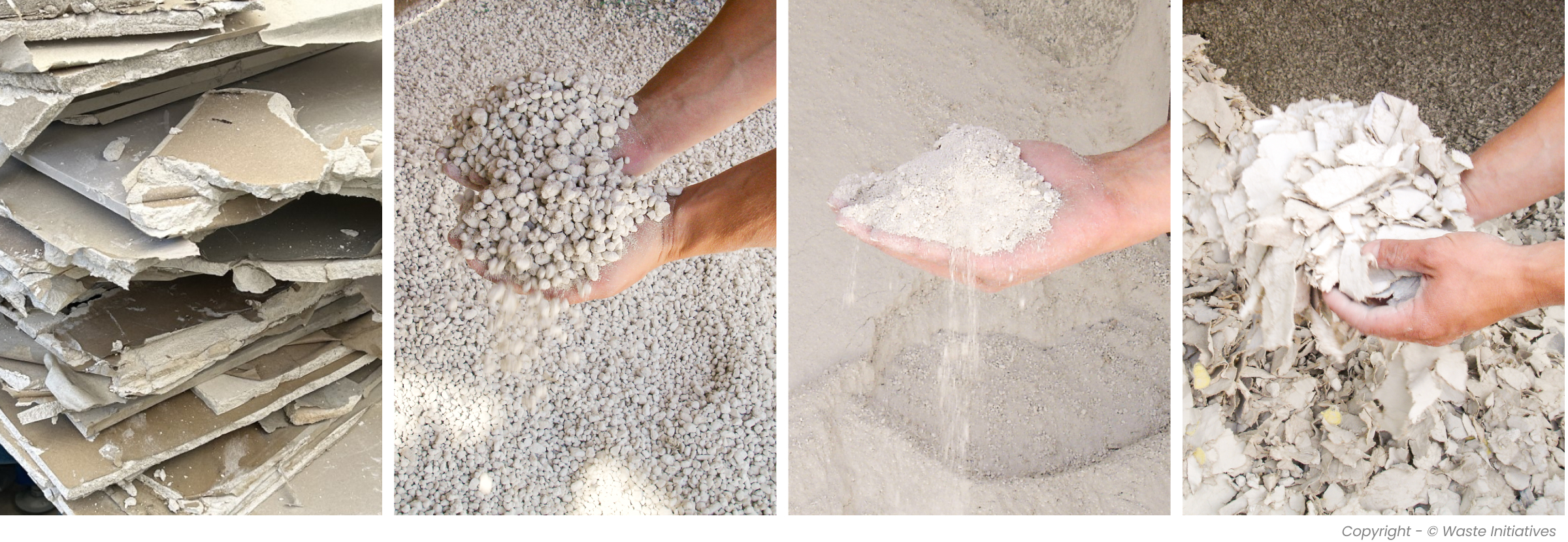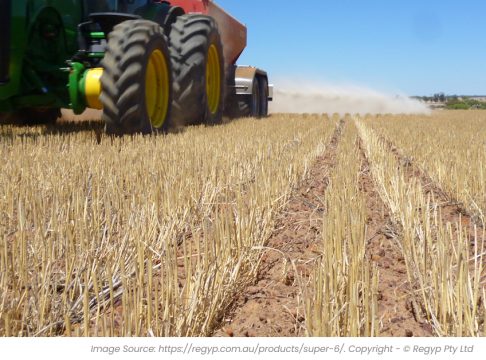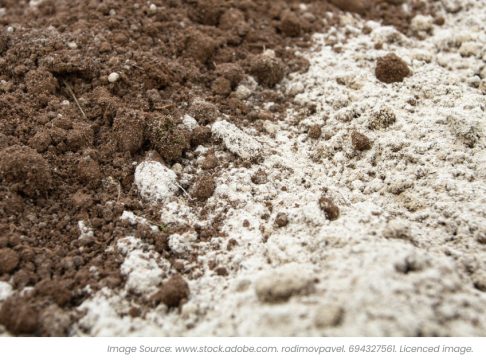Introduction to Plasterboard Recycling
In Australia, the annual production of plasterboard exceeds 1 million tonnes, with a significant portion unfortunately ending up in landfills, adversely impacting the environment. However, materials from plasterboard waste are 100% recyclable, transforming into valuable reusable products such as gypsum and paper, showcasing the potential for sustainable plasterboard recycling. Adopting recycling methods not only mitigates environmental footprints but also cuts down project waste costs, significantly reducing the volume of waste directed to landfills.
Environmental Impact of Plasterboard Waste
The environmental repercussions of plasterboard waste are significant but often overlooked. Gypsum materials, containing calcium sulfate dihydrate, decompose in landfills due to sulfate-reducing bacteria, releasing toxic hydrogen sulphide gas. Landfills provide an ideal environment for these bacteria, along with methanogenic bacteria, which convert plasterboard into methane gas, a potent greenhouse gas. Recycling gypsum waste reduces the need for quarrying for virgin gypsum and saves resources like energy, metal, and other natural resources used in producing new gypsum.
Recycling Impact
- Resource Conservation: Recycling plasterboard conserves natural resources by reducing the demand for raw gypsum.
- Landfill Reduction: Approximately 1400 tonnes of waste product per year could be diverted from landfills, mitigating environmental degradation.
- Economic Benefits: Recycling cuts down on landfill tipping fees, site clean-up costs, and waste transportation, presenting a cost-effective solution for businesses and contributing positively to their environmental stewardship profile.
Sustainable Practices
- Gyprock’s Commitment: As a leading supplier, Gyprock operates with sustainable manufacturing processes, emphasising waste reduction and efficient resource use. Over 95% of its manufacturing waste is recycled, underscoring the potential for industry-wide adoption of sustainable practices.
- Regyp’s National Solution: Offering a comprehensive solution across Australia, Regyp recycles all types of plasterboard and cornice scrap into products beneficial for agriculture, showcasing the versatility of recycled plasterboard.
The Recycling Plasterboard Process
The plasterboard recycling process is a comprehensive approach aimed at minimising waste and promoting sustainability within the construction industry. Here’s a closer look at the steps involved.
Collection and Transportation
CSR Gyprock™ operates a gypsum board waste take-back scheme across Australia, collecting offcuts and demolition material. REGYP offers services in major cities, accepting waste from all major suppliers, including demolition projects. Options for waste collection include local recycling plant disposal, waste bags, truck pick-ups, and skip bins.
Sorting and Processing
Waste plasterboard must be clean, separated, and have low levels of contamination. At recycling facilities, specialised machinery separates gypsum from other materials. The size reduction process involves shredding and sorting, followed by crushing, milling, and sieving to obtain three fractions:
- Shredded paper/cardboard,
- gypsum granules (2-10 mm),
- and fine gypsum powder (0-2 mm).
The granules, particularly those within the 2-10 mm range, are recycled as raw material for gypsum plants, where they undergo calcination for new plasterboard production. Technicians ensure the quality of the recycled gypsum before its reintroduction into drywall manufacturing.
This systematic approach not only minimises waste but also promotes sustainable resource utilisation in agriculture and construction.
Reintroduction into the Production Process
The collected material is 100% fully recycled, including the paper, with more than 95% of Gyprock’s manufacturing waste either reintroduced into the production process or converted into by-products like soil conditioners for agriculture.
Challenges and Solutions in Plasterboard Recycling
Challenges
Navigating through the complexities of plasterboard recycling, several challenges emerge, notably the scarcity of adequate waste management facilities, existing legislation hurdles, and the inherently fragmented nature of construction projects. These obstacles often result in large volumes of potentially recyclable materials being relegated to landfills, primarily due to contamination issues. The situation is further exacerbated in remote and regional areas where kerbside municipal waste collection and recycling services are sparse.
Solutions
- Designated Storage Zones: Establishing specific areas on construction sites for plasterboard waste can significantly reduce contamination.
- Separation of Waste Streams: Encouraging the segregation of plasterboard from other construction and demolition waste enhances recycling efficiency.
- Leveraging Local Recycling Centres: Utilising nearby facilities for plasterboard disposal and recycling can minimise transportation costs and environmental impact.
- Recycling Payback Arrangements: Negotiating agreements with recycling services can offer financial incentives for proper waste management practices.
Improvements
- Enhanced Collection and Processing: Upgrading facilities to better handle co-mingled waste can reduce contamination and boost resource recovery rates.
- Optical Sorting Equipment: Investing in advanced sorting technologies can improve the separation of recyclable materials, making the recycling process more efficient.
- Education and Awareness: Raising awareness among construction professionals about the benefits and methods of plasterboard recycling can foster greater participation.
Benefits of Plasterboard Recycling
Recycling plasterboard not only aligns with environmental sustainability goals but also offers tangible benefits for the construction industry and beyond. Here’s a closer look at the multifaceted advantages:
Construction and Economic Benefits
- Regulatory Compliance: Adhering to council regulations for recycling building materials becomes streamlined with CSR Gyprock™ plasterboard recycling.
- Site Safety and Cost Savings: Improved occupational health and safety by removing offcut plasterboard, leading to cleaner, safer sites, and reduced landfill fees.
- Enhanced Business Image Demonstrates a commitment to corporate social responsibility, appealing to environmentally conscious homebuyers and enhancing the company’s offering.
Agricultural and Environmental Advantages
- Soil Improvement: Gypsum, derived from recycled plasterboard, is rich in calcium and sulfur, crucial for plant growth, acid soil improvement, and aluminium toxicity treatment.
- Waste Reduction: Significantly reduces the volume of waste sent to landfills, contributing to a decrease in environmental pollution.
Broader Implications
- Resource Management: Encourages efficient on-site resource management, leading to cleaner construction sites.
- Market Preference: Builders who prioritise recycling and use products with a lower environmental impact are preferred by eco-conscious consumers, potentially increasing market share.
- Enhanced Business Image: Demonstrates a commitment to corporate social responsibility, appealing to environmentally conscious homebuyers and enhancing the company’s offering.
By focusing on plasterboard recycling, the construction industry can achieve cost savings, comply with environmental regulations, and contribute to a more sustainable future.
Applications
Recycled plasterboard materials, transformed through innovative plasterboard recycling and Gyprock crushing processes, find utility in various applications beyond the construction industry. These applications showcase the versatility and sustainability of recycled plaster products, contributing significantly to environmental conservation and resource management.
Agricultural Uses
- Soil Conditioner: Gypsum, derived from recycled plasterboard, improves soil structure, aeration, and water permeability, enhancing crop yield.
- Nutrient Supply: Supplies essential nutrients like calcium and sulfur, promoting plant growth.
Construction Materials:
- New Plasterboard Production: Recycled gypsum is reintegrated into new plasterboard, reducing the need for virgin gypsum.
- Cement Manufacturing: Gypsum acts as a set retarder in cement, improving its workability and strength.
Land Rehabilitation:
- Reclamation Projects: Utilised in land reclamation efforts, recycled gypsum helps in soil remediation and stabilization, aiding in the recovery of degraded lands.
These diverse applications of recycled plasterboard and Gyprock products underscore the importance of plasterboard recycling in promoting a circular economy, where waste is transformed into valuable resources, fostering sustainable practices across industries.
Mavitec Depacker
A Viable Solution
The Mavitec Paddle Depacker solves your waste problem by the separation and resizing of organic and packaged fractions from packaging/outer materials. This product destruction unit is able to depack a wide variety of packaged and multi-material/multi-layered waste to produce a clean material output, with official lab results of > 99.7%, as well as the cleanest packaging fraction in the market.
The Mavitec Depacker has proven to be effective for the processing of pre-shredded plasterboard, including paper separation and size reduction to desired granules. Waste Initiatives recent data capture from the Depacker S, on pre-shredded plasterboard waste using 10/15 mm screens, resulted in an acceptable finely granulated output. For further details, please reach out to our team.
Conclusion
The transition from Gyrock to Gypsum highlights a significant opportunity for the construction industry in Australia. Effective plasterboard recycling isn’t only addressing environmental concerns; it’s also offering economically sustainable solutions.
By repurposing plasterboard waste into valuable resources like gypsum and paper, we’re demonstrating the potential for cost savings and enhanced efficiency. From reducing landfill fees to improving site safety, the advantages of embracing plasterboard recycling are clear.
As equipment specialists, we understand the challenges and opportunities in the industry. By investing in recycling infrastructure, upgrading facilities, and educating stakeholders, real change is driven towards a more sustainable and profitable construction landscape.
Visit our website to explore your options further, or contact our Equipment Specialists to find out how we can help you.
References
Regyp. https://regyp.com.au/plasterboard-recycling/
Paul’s Rubbish Removal. https://www.paulsrubbish.com.au/plasterboard-recycling/
Materials Market. https://materialsmarket.com/articles/what-is-plasterboard-made-of/
Siniat. https://www.siniat.co.uk/en-gb/uk/plasterboard/
Saint-Gobain. https://www.saint-gobain.my/events-news/gypsum-board-uses-and-benefits
Department of the Environment and Energy. https://www.dcceew.gov.au/sites/default/files/env/pages/9014ac31-f832-48bd-85b9-f02d8ef70fbe/files/csr-gyprock.pdf
Environmental Protection Authority. https://www.epa.nsw.gov.au/-/media/epa/corporate-site/resources/managewaste/100084-plasterboard-removal.pdf
Queensland Department of Environment and Science. https://www.des.qld.gov.au/policies?a=272936:policy_registry/wr-eowc-approved-plasterboard.pdf
Boral. https://www.boral.com.au/sites/corporate/files/media/field_document/07_Environmental_impacts.pdf
Plasterer Melbourne. https://plasterer-melbourne.com.au/is-it-possible-to-recycle-plasterboard/
Gyprock. https://www.gyprock.com.au/about-us/plasterboard-recycling
Business Recycling. https://businessrecycling.com.au/recycle/plasterboard
Regyp. https://regyp.com.au/agricultural-benefits-of-gypsum/
McNaughts. https://www.mcnaughts.com/gypsum-for-soil/
Pacific Fertiliser. https://pacificfertiliser.com/mined-gypsum/
Waste Initiatives. https://wasteinitiatives.com.au/your-waste/plasterboard/
Eco-Resource. https://ecoresources.net.au/eco-resource/

